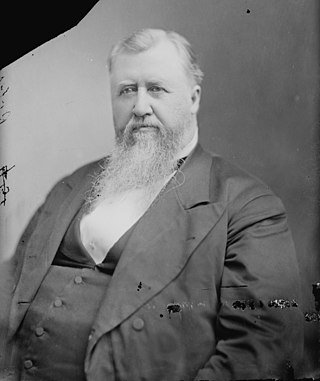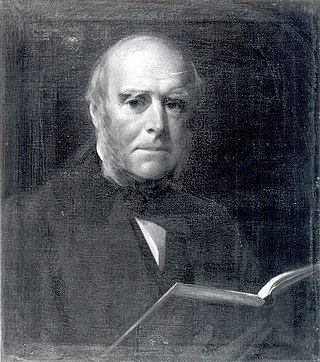Related Research Articles

In the history of the United Kingdom and the British Empire, the Victorian era was the period of Queen Victoria's reign, from 20 June 1837 until her death on 22 January 1901. The era followed the Georgian period and preceded the Edwardian period, and its later half overlaps with the first part of the Belle Époque era of Continental Europe.

The history of British newspapers dates to the 17th century with the emergence of regular publications covering news and gossip. The relaxation of government censorship in the late 17th century led to a rise in publications, which in turn led to an increase in regulation throughout the 18th century. The Times began publication in 1785 and became the leading newspaper of the early 19th century, before the lifting of taxes on newspapers and technological innovations led to a boom in newspaper publishing in the late 19th century. Mass education and increasing affluence led to new papers such as the Daily Mail emerging at the end of the 19th century, aimed at lower middle-class readers.
The Society for the Diffusion of Useful Knowledge (SDUK) was founded in London in 1826, mainly at the instigation of Whig MP Henry Brougham, with the object of publishing information to people who were unable to obtain formal teaching or who preferred self-education. It was a largely Whig organisation, and published inexpensive texts intended to adapt scientific and similarly high-minded material for the rapidly-expanding reading public over twenty years until it was disbanded in 1846.

A business directory is a website or printed listing of information which lists businesses within niche based categories. Businesses can be categorized by niche, location, activity, or size. Business may be compiled either manually or through an automated online search software. Online yellow pages are a type of business directory, as is the traditional phone book. The details provided in a business directory may vary. They may include the business name, addresses, telephone numbers, location, contact information, type of service or products the business provides, the number of employees, the served region and any professional associations.
James Malcolm Rymer (1814–1884) was a British nineteenth-century writer of penny dreadfuls, and is the co-author with Thomas Peckett Prest of both Varney the Vampire (1847) and The String of Pearls (1847), in which the notorious villain Sweeney Todd makes his literary debut.

Robert Klotz was a Democratic member of the U.S. House of Representatives from Pennsylvania.
Bridport was a parliamentary borough in Dorset, England, which elected two Members of Parliament (MP) to the House of Commons from 1295 until 1868, and then one member from 1868 until 1885, when the borough was abolished.

The Studio: An Illustrated Magazine of Fine and Applied Art was an illustrated fine arts and decorative arts magazine published in London from 1893 until 1964. The founder and first editor was Charles Holme. The magazine exerted a major influence on the development of the Art Nouveau and Arts and Crafts movements. It was absorbed into Studio International magazine in 1964.
Christian Isobel Johnstone (1781–1857) was a prolific journalist and author in Scotland in the nineteenth century. She was a significant early feminist and an advocate of other liberal causes in her era. She wrote anonymously, and under the pseudonym Margaret Dods. She is highlighted as one of the first paid female editors of a journal.

The Chinese Repository was a periodical published in Canton between May 1832 and 1851 to inform Protestant missionaries working in Asia about the history and culture of China, of current events, and documents. The world's first major journal of Sinology, it was the brainchild of Elijah Coleman Bridgman, the first American Protestant missionary appointed to China. Bridgman served as its editor until he left for Shanghai in 1847, but continued to contribute articles. James Granger Bridgman succeeded him as editor, until September 1848, when Samuel Wells Williams took charge.
Bradbury & Evans (est.1830) was an English printing and publishing business founded by William Bradbury (1799–1869) and Frederick Mullett Evans (1804–1870) in London.

William Bodham Donne (1807–1882) was an English journalist, known also as a librarian and theatrical censor.
Matilda Marian Pullan —also writing under the pen names Mrs. Pullan and Aiguillette— was a prolific and influential 19th century British writer on needlework who contributed columns to a wide selection of periodicals in the 1840s and 1850s. She was the author of numerous books on needlework, especially the decorative forms known as fancywork, and she wrote a comprehensive encyclopedia on the subject. She was also an extremely successful businesswoman who ran a needlework supply shop that expanded to become a mail order business. Towards the end of her life, she moved to America, where she opened a consulting business whose clients included the actor Laura Keene.

Taxes on knowledge was a slogan defining an extended British campaign against duties and taxes on newspapers, their advertising content, and the paper they were printed on. The paper tax was early identified as an issue: "A tax upon Paper, is a tax upon Knowledge" is a saying attributed to Alexander Adam (1741–1809), a Scottish headmaster.

Ada Sarah Ballin was an English author, journalist, editor, and lecturer. She was the editor and proprietor of the magazines Baby, Womanhood and Playtime, and published articles and books on health, child care, and dress reform.
The Isle of Wight Observer is a free newspaper published on the Isle of Wight. It was launched on 10 August 2018 in a tabloid format, and is distributed through supermarkets and other outlets across the island. It is regulated by IMPRESS.
Heidi Thomson is a New Zealand academic, a full professor of English at the Victoria University of Wellington.
The New-York Directory, published in 1786, was the first extant directory for New York City and the third published in the United States. It listed 846 names. A year earlier, the first two in the country were published in Philadelphia – the first, compiled by Francis White, was initially printed October 27, 1785, and the second, compiled by John Macpherson (1726–1792), was initially printed November 22, 1785.

Illustrirte Zeitung was Germany's first illustrated magazine that existed between 1843 and 1944. It was also known as Leipziger illustrirte Zeitung. The magazine described itself as the Germany's illustrated magazine with the international view.
References
- 1 2 O'Malley, Tom (2015). "Mitchell's Newspaper Press Directory and the Late Victorian and Early Twentieth-Century Press". Victorian Periodicals Review. 48 (4): 591–606. doi:10.1353/vpr.2015.0057 . Retrieved 28 December 2022.
- 1 2 Phillips, Gordon. "Mitchell, Charles (1807–1859), advertising agent and publisher of the first British press directory". Oxford Dictionary of National Biography. Oxford Dictionary of National Biography. doi:10.1093/ref:odnb/60290 . Retrieved 28 December 2022.
- 1 2 The Routledge handbook to nineteenth-century British periodicals and newspapers. Abingdon, Oxon. 2016. ISBN 978-1-315-61334-5.
- 1 2 3 4 5 6 Gliserman, S. (1969). "Mitchell's "Newspaper Press Directory": 1846-1907". Victorian Periodicals Newsletter. [Johns Hopkins University Press, Research Society for Victorian Periodicals] (4): 10–29. ISSN 0049-6189.
- ↑ Brake, Laurel (2015). "Nineteenth-Century Newspaper Press Directories: The National Gallery of the British Press". Victorian Periodicals Review. 48 (4): 569–590. doi:10.1353/vpr.2015.0055.
- ↑ Mitchell, Charles (1847). The Newspaper Press Directory. Fleet Street, London: C. Mitchell. Retrieved 28 December 2022.
- ↑ Tolfo, Giorgia; Vane, Olivia; Beelen, Kaspar; Hosseini, Kasra; Lawrence, Jon; Beavan, David; McDonough, Katherine (2023). "Hunting for Treasure: Living with Machines and the British Library Newspaper Collection". In Bunout, Estelle; Ehrmann, Maud; Clavert, Frédéric (eds.). Digitised Newspapers – A New Eldorado for Historians?. doi:10.1515/9783110729214-002 . Retrieved 28 December 2022.